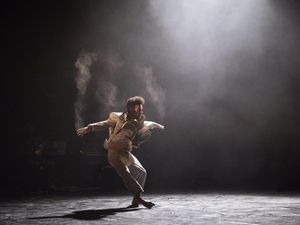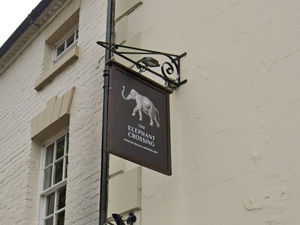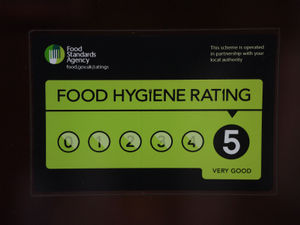When Julie Andrews swapped Austria for 1940s Coalport
There is, it has to be admitted, a bit of a difference between the soaring mountains of Austria and the riverside village of Coalport.
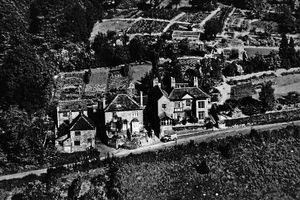
But they have something in common – Julie Andrews brought them both alive with the sound of music.
Or was it Madeley?
Either way, it was a coup for local businessman Gordon Dickins, clearly a man of some persuasive powers, who booked the starlet, who was already making a name for herself at a young age.
Alas, it seems that he has faded a little from the collective memory.
In a photo we carried recently of what turned out to be the opening of Coalport Village Hall Mr Dickins had a central place – he actually opened the hall – but was nevertheless misidentified by one or two readers.
So, step forward Gordon Dickins, his namesake grandson, to tell us something about this Coalport character from yesteryear.
"I was born in 1948 and spent the whole of my childhood and most of my teenage years in the village and have many happy memories of that time," said Gordon.
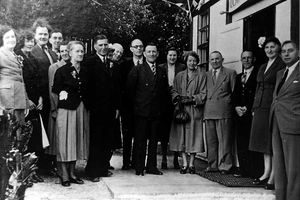
"With absolute certainty I can confirm that the man in the middle of the front row of the picture you carried is Mr Gordon Dickins (not Dickin), my grandfather who I was named after.
"However the lady to the left of him (that is, on his right) is not Mrs Dickins, as had been suggested.
"I think my grandfather may have contributed, along with others, to the building of the village hall and I know that he purchased a silver trophy for presentation at the annual flower show.
"He also, and I don't know how he had the connections for this, managed to get a very young Julie Andrews, I believe accompanied by her parents, to perform in either Coalport or Madeley at some event or other."
Depending on how old Julie was at this Shropshire performance, it is likely that this visit of a future superstar was soon after the war.
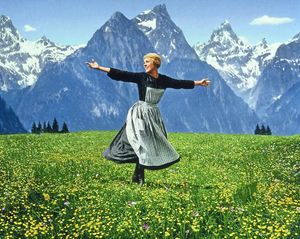
"And he persuaded the American harmonica player Larry Adler to perform at the Anstice Hall in Madeley.
"My late uncle, Ivor, had an MG TC sports car and he drove him back from Madeley to Wolverhampton at breakneck speed in time for Mr Adler to go on stage in one of the theatres there.
"I think this must have been in the very early 1950s so I was too young to have been aware of it for myself."
The opening of the village hall was on May 30, 1953, and was the highlight of Coalport's Coronation celebrations.
The building was called the Coronation Village Hall.
A report of the opening in the Shrewsbury Chronicle carried on June 5 says that Gordon Dickins was the president of the committee and "sprang a surprise by presenting a £100 cheque to help clear off the debt on the hall.
He then declared the building open."
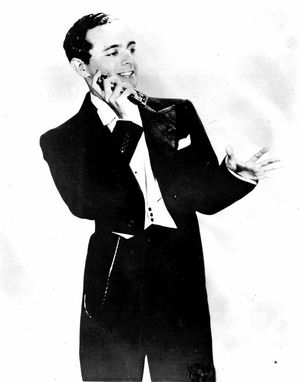
Less happily, the building was "built of asbestos and wood" – although of course that would not have caused alarm bells at the time.
It has since been replaced by a new village hall.
Young Gordon said: "Mr G.W. Dickins, as he was best known, was indeed a factory owner but had no connection with the china works.
"After the war he ran the Gitchfield Brickworks, down river from Coalport, for some years.
"After he closed it, the building lay empty for a while and he allowed me to go down there with school friends to play football in the empty sheds.
"But it was a spooky place to be and I don't think we really enjoyed the experience too much.
"I can remember, when it was still operating as a brick works, the little petrol-engined locomotive which pulled the trucks up to the Severn Valley line which ran behind the works.
Later, he used the building as a pig and poultry farm.
His other business ventures included operating the Arcade Pressworks in Madeley (again, in the years following the war), part of which is now Jubilee House, and he ran a business called Steel Fabrications Ltd in Station Road, Madeley.
"My grandparents moved from Dudley to Coalport in 1939 and lived at The Cottage – a large house, in spite of the name – on Sutton Bank, or Sutton Hill as it was called then.
"It had nearly eight acres of gardens and woodland, a wonderful place for me to play as a child. I lived next door at No 2 Sutton Hill. They had four children, Ivor, Leslie (my father), Raymond and Doreen and all of the "boys" worked in the family businesses at some time or other.
"Later on in the 1970s The Cottage was purchased by Telford Development Corporation and a number of houses were built within the grounds, so the lovely gardens that I remember are no more.
"But I hope that the people who now live there enjoy the surroundings and views of the Severn as much as I did."
Gordon said: "I think my grandfather must have been quite a character and I like to give him credit for what he achieved whenever I can. A couple of people suggested I should write a book on G.W. Dickins.
"I don't think it would warrant a book but perhaps I should get all I can about him down on paper."
Gordon retired from the library service eight years ago.
But he still does a lot of landscape photography and gives talks to local groups and societies.
He is chairman of the Mary Webb Society.
Although he has lived in Shrewsbury since 1980, he likes to keep in touch with his old haunts. Most weeks we take my wife's elderly uncle down to the Brewery Inn in Coalport, his favourite local, for his lunch and a pint so I still get to keep an eye on the village.
"Once in a while I have a walk around the churchyard at Sutton Maddock where one or two of my relatives are buried and reading the gravestones is like seeing a who's who of Coalport worthies.
"If only we had all of their stories, including some of the near unrepeatable ones ... but then that's the case everywhere."

